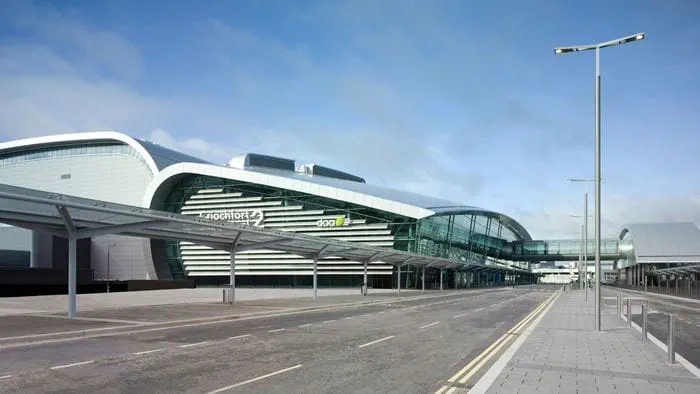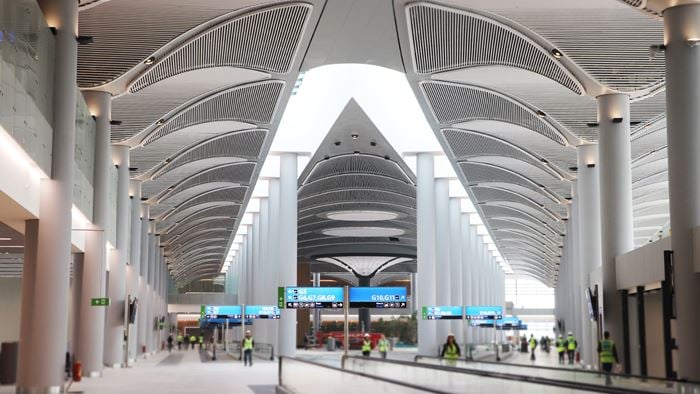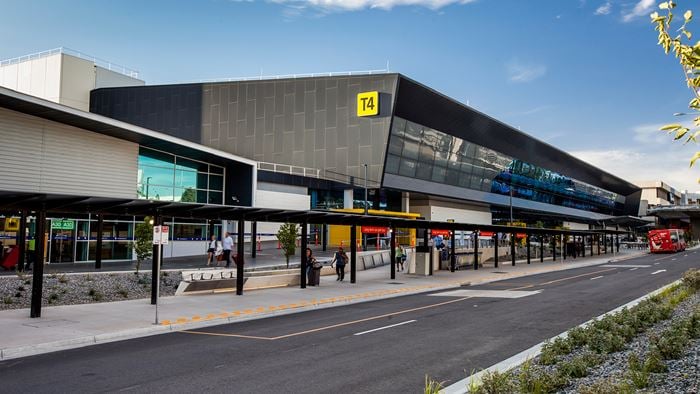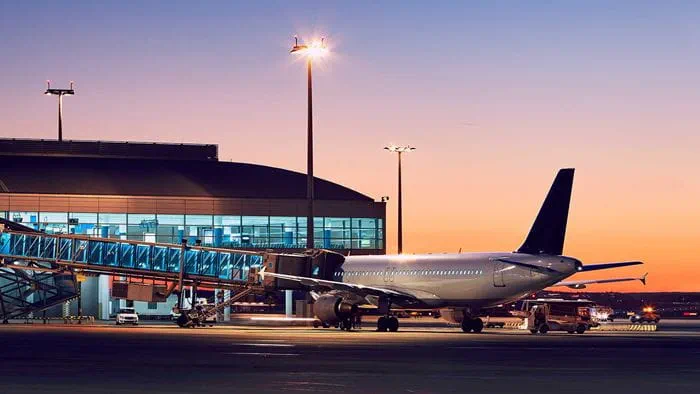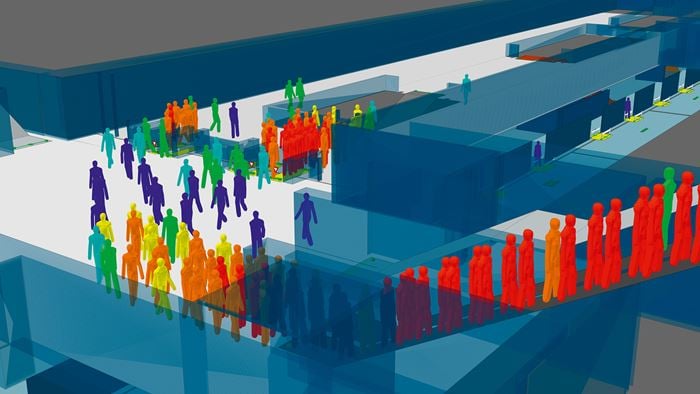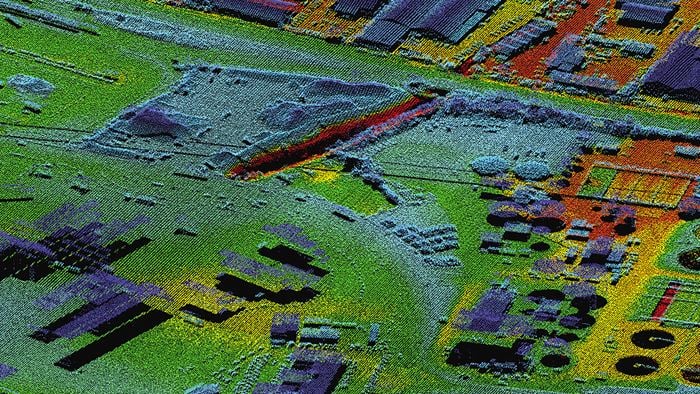Still reeling from the COVID travel shutdown, the aviation industry is exploring ways to adapt to new safety standards and gently ramp up operations as airline carriers and airport operators transition towards a ‘new normal’. Digital modelling tools have gained prominence as a way to help airport operators plan capacity, charting how passengers can safely use a terminal building in our new physically distant world.
Listed among the top 12 busiest airports in Europe before the pandemic, Rome Fiumicino reduced terminal capacity as flight cancellations and travel restrictions forced operators worldwide to cut back. As operations trickle back towards a ‘new normal’, Fiumicino operator Aeroporti di Roma (ADR) called on Arup to model a COVID-appropriate check-in process within Terminal 3’s departure hall.
Arup is using its crowd modelling software MassMotion, recently updated to analyse the impact of physical distancing, to help ADR model how it can meet the needs of growing passenger numbers in the 20,000 m² terminal space. More specifically, our aviation specialists are helping ADR assess how it can operate future schedules using Fiumicino’s Terminal T3 check-in area, modelling what capacity levels can be delivered while safeguarding physical distancing requirements. Our consultants developed a 3D passenger flow analysis modelling the behaviour of 25,000 passengers, successfully proving that passengers can be processed while maintaining physical distance within Fiumicino’s T3 departure hall.
Project Summary
25,000 passengers simulated in a day
20,000 m² simulated terminal GFA
250 simulated check-in desks
“Our passenger flow modelling tool allows clients to identify potential operational challenges months in advance and check the effectiveness of potential mitigation solutions ” Ireneusz Kolodziej Director
MassMotion: readying airports for the ‘new normal’
Using Arup’s MassMotion tool, our specialists modelled footfall across the terminal with physical distancing constraints, helping ADR to test mitigation scenarios by quantifying how long people will likely spend within a set proximity from each other.
To accurately reflect the airport environment, each of the 25,000 digital agents representing individual passengers is assigned to a particular set of check-in desks in accordance with the scheduled allocation, and programmed with characteristics such as desired personal space and walking speed based on age group. All agents are then programmed to look for their destinations in a free environment, opting for the shortest route and avoiding obstacles, whilst trying to maintain physical distance from other passengers.
To establish proof of concept, the team initially ran a test simulation of a busy historical day at Fiumicino airport, and compared the simulated results with data collected by the airport operator on the same day. The MassMotion simulation data closely matched that collected by the airport, confirming the model’s validity.
Heat maps to model physically distant operations
Our MassMotion digital simulations analyse whether physical distance can be maintained from the moment a passenger enters the terminal, to the moment they board the aircraft. Our team has explored several scenarios, creating a catalogue of 3D movies and 'heat maps’ to help Aeroporti di Roma explore the operational dynamics and make use of the simulation results to identify locations requiring additional measures.
Arup made recommendations that help meet the physical distance requirements, while optimising the use of existing infrastructure, including modifying the check-in desk allocation, restructuring the security queue lines and creating additional space for passengers waiting for their allocated check-in desks to open.
Fast, digital response to COVID challenges
Before using the tool to carry out the flow analysis work at Fiumicino Airport, we used MassMotion for a COVID-19 capacity study for one of the leading airports in Central Europe, where our task was to find safe solutions for airport operations to accelerate the reopening of the country’s air travel.
In just over two months, our aviation specialists developed a digital twin of the terminal and prepared a physical distancing simulation in MassMotion, demonstrating that with small adjustments the airport could restart operations without putting staff and passengers at risk.
Arup’s aviation advisors suggested a range of solutions including rearranging queuing areas and closing parts of the terminal infrastructure to enable physical distancing when queuing, as well as adjusting boarding and de-boarding times to provide a safe environment for travellers at the airport. The implementation of these recommendations has helped reopen the airport and slowly ramp up post-pandemic air traffic in Europe.
Supporting the post-pandemic recovery
Joining global forces, our offices in Warsaw, London, Toronto and Milan worked together to deliver the project in four weeks. The footfall simulation videos provide evidence to Civil Aviation and Health authorities that effective COVID-19 risk mitigation measures can be implemented while handling forecast passenger traffic within one terminal; while providing a powerful tool to explain to the public that airports can be a safe environment during the pandemic.
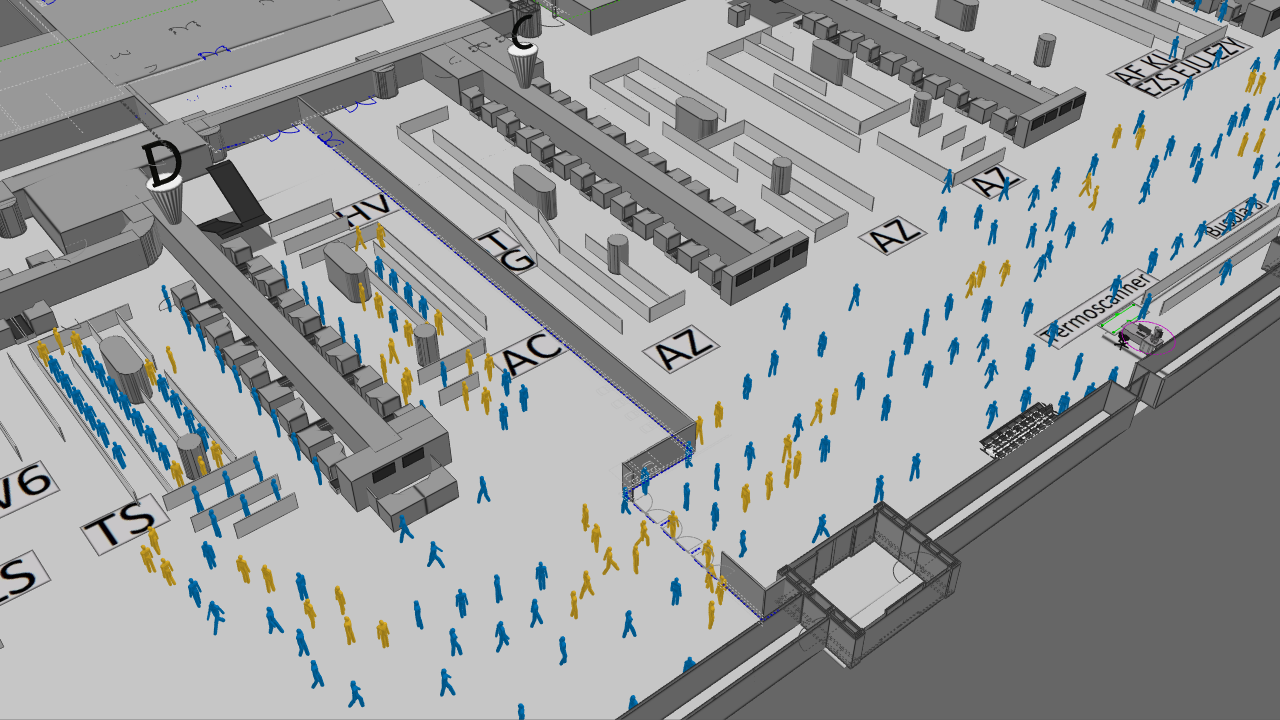 ;
;

